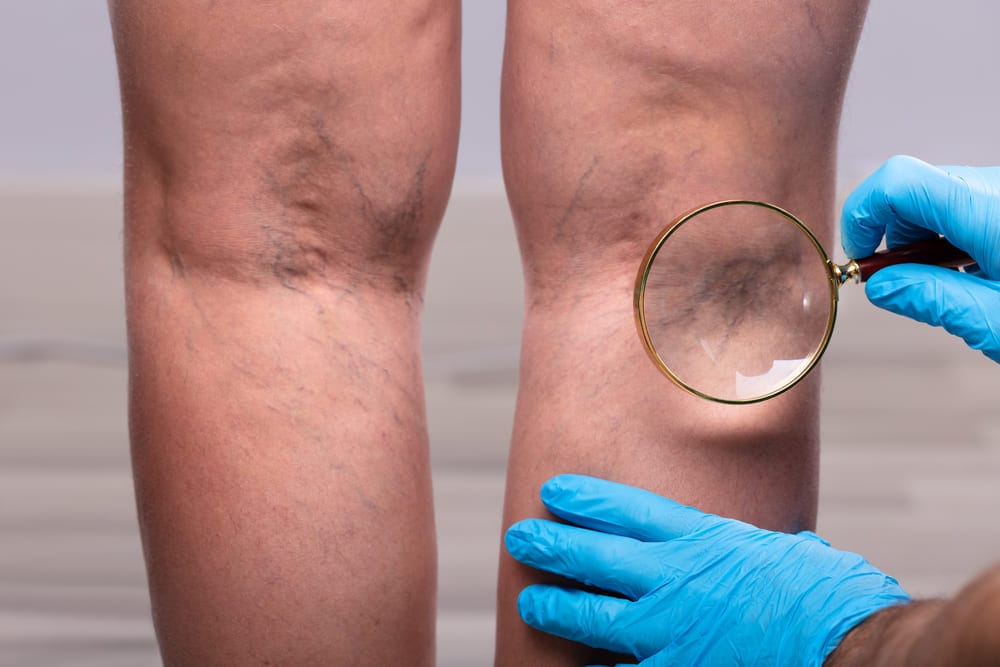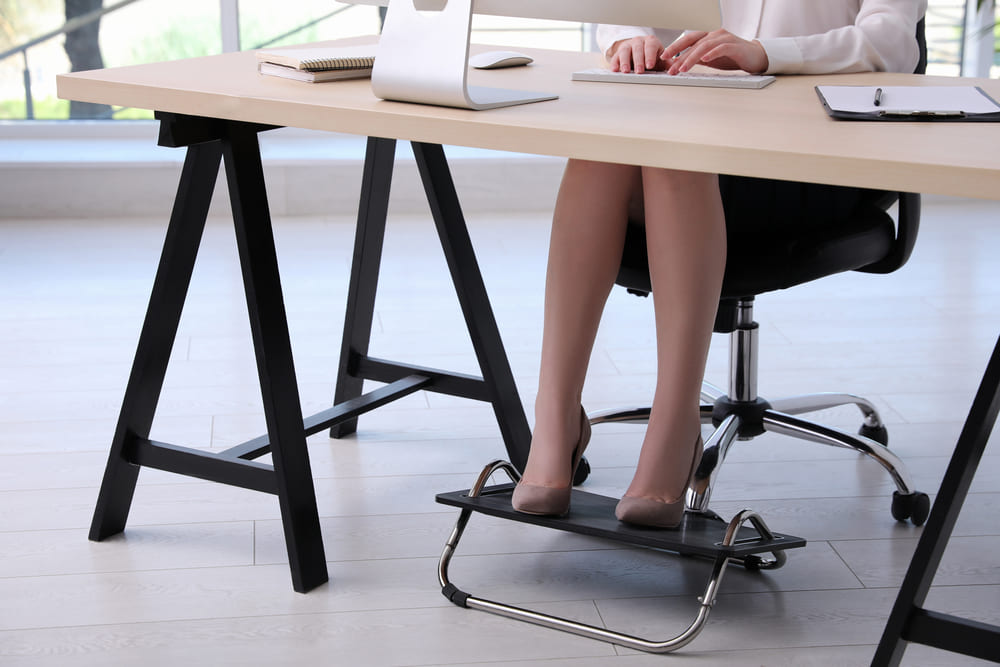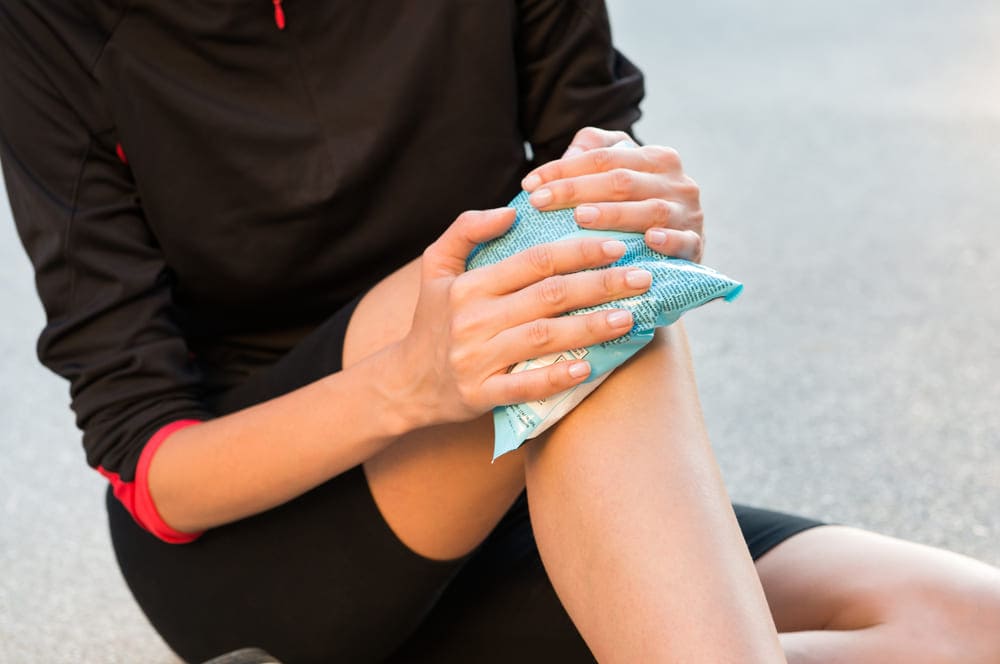*When you buy through links on our site, we may earn an affiliate commission at no additional cost to you.
So lately, you’ve been experiencing a lot of leg pain? And you’re wondering if your office chair may have something to do with it?
If that’s you, this guide is for you. We have researched sitting in an office chair and leg pain and discovered some helpful information we want to share with you.
Can an office chair cause leg pain? Yes, an office chair can cause leg pain in the long run if you sit in it all day without proper sitting posture.
However, setting your office chair correctly, sitting in the right posture, and taking regular breaks from the chair can help minimize the chances of hurting your leg.
Find more in-depth information below on how your office chair could be making your legs hurt.
Plus, we have discussed some additional tips on preventing leg pain from catching up with you when using your office desk.
Table of Contents
Can My Office Chair Cause Leg Pain?
As mentioned above, sitting in your office chair for extended periods can cause leg pain in the long run. This is especially true if you sit in the wrong chair that doesn’t have great ergonomic features for long hours.

Poor sitting posture will increase the risk of leg pain. Sitting still for a long period will also increase your chances of getting knee pain and stiffness.
This is how many hours in your office chair may cause leg pain:
Long sitting hours cause pressure buildup in your legs
This article from Mayo Clinic explains that prolonged sitting or standing can result in a possible buildup of fluid in your leg veins, a condition known as chronic venous insufficiency.

Chronic venous disease is caused by valves in your leg veins not working properly to keep blood moving efficiently from the leg to your heart.
Instead, it pools in your feet and legs, resulting in pain and swelling. The pain you’re likely to experience is described as a burning or cramping sensation and is mainly felt in the calf.
Pressure builds in your legs when you sit in your office chair for long periods. This continuous pressure causes the leg muscles to fatigue easily, resulting in leg pain.
Inactivity
Leg muscles are the largest muscles in your body. Now, if you spend all the day in your office chair and don’t use your largest group of muscles, muscle atrophy soon catches up with you, making the muscles weak.

Sitting for long hours makes your weak muscles unable to handle the sitting pressure for long, making them ache. Consequently, you’ll start feeling leg pain.
Poor blood circulation
Sitting for prolonged hours also affects blood circulation in your legs, reducing blood backflow from your legs. This can result in swelling of your ankles.
In extreme cases, some folks tend to develop a blood clot in the lower part of the leg, a condition known as deep vein thrombosis (DVT).
Dehydration
Dehydration may also indirectly contribute to leg pain. As you hold your leg muscles in a fixed position, you increase your chances of muscle cramps in your legs.

And staying dehydrated (most people with a desk job often stay dehydrated for long) makes this condition even worse.
Are you overusing your leg muscles?
Overusing these muscles may also make your leg hurt. This isn’t related to using an office chair, but it is worth mentioning.

If you have engaged your muscles in some high-intensity activity that heavily relies on your leg muscle activity, then this may result in leg pain as well.
How to stop leg pain from sitting all day?
If you start feeling leg pain after spending hours in your office chair, you can implement the measures we have discussed below to stop the pain.
Invest in an ergonomic office chair
Probably the most important step toward curbing leg pain for people who sit all day is investing in a good office chair. As we mentioned earlier, a bad office chair will likely hurt your lower limbs.
An ergonomic office chair, on the contrary, will help you maintain the correct sitting posture and reduce the chances of leg pain and other body pains like back, shoulder, and neck pain.
How to know if you need a new chair:
So, how do you know you have the wrong chair and need to replace it with a new one? It’s simple:
If your current chair gives you discomfort in your back, shoulders, and lower limbs and causes the loss of muscle function, fatigue, and lack of focus and concentration, it’s time to get a new chair.

Besides, the lack of crucial features in your office chairs will also help you decide if it’s time to get a new chair.
The key features to consider include:
- Height adjustability
- Decent back support, and
- Ergonomic office chair features (e.g., adjustable lumbar support, headrest, armrests, 460-degree swivel, etc.).
If your chair doesn’t offer most of these features, consider replacing it.
Adjust your seat height correctly
Another way to keep your legs from getting hurt due to extended sitting periods is to set the seat height correctly.
The correct seat height lets you evenly distribute pressure in your body, reducing the risk of your leg muscles getting numb or swelling and promoting proper blood flow and circulation.
Plus, it helps prevent neck and shoulder pain due to straining of these parts.
An ergonomic chair lets you adjust the seat height correctly, so your feet stay planted on the floor. This prevents the possibility of crossing your legs to make one-foot touch the ground.

As you can easily guess, sitting with crossed legs or with ankle over the knee can constrict blood flow and circulation, possibly damaging your veins over time. In severe cases, you may develop DVT.
Sitting in a chair set too high can easily destabilize your body and cause tiredness. This can, in turn, put pressure on your thighs and reduce blood backflow—causing your ankle and legs to swell.
Likewise, sitting on office chairs that are too low also disrupts blood circulation, increasing the chances of your lower limbs feeling pain.
Don’t forget to adjust your computer screen when you set seat height. This ensures you don’t strain your neck by looking at your computer screen at an incorrect angle.
Takes breaks from your office chair
It is easy for office workers to get glued to their office chairs for long periods throughout a workday of more than eight hours.
Sometimes, you may have a load of work to handle and don’t want to get off your office chair until you’re done.

Unfortunately, sitting for prolonged hours isn’t good for your health and increases the risk of weight gain, cardiovascular disease (including stroke and heart disease), etc.
We strongly recommend you take breaks from your chair!
This can be as simple as standing up, walking, or even stretching in your seat. It helps ensure your leg muscles don’t become weak and easily susceptible to aching.
Taking breaks is also helpful in improving your productivity.
Exercises to help relieve pain from sitting for hours
You can also try some exercises that help relieve pain from sitting for long hours, say for more than 8 hours. These exercises target different muscles (discussed below) and help reduce upper thigh and leg pain caused by prolonged sitting.
- Hip Flexors: Whenever you sit, the hip muscles get flexed. Constantly sitting puts the muscle in constant working condition, putting them at risk of shortening and tightening. Doping weighted luges (up to 3 sets) will help stretch the hip flexors.
- Piriformis: The piriformis getting too tight can cause your leg to hurt after sitting all day. Do the pigeon stretch for 10-15 seconds for each leg and repeat for up to 3 sets to keep this muscle from getting too tight and causing leg pain.
- Plantar Fascia: This is the connective tissue running from the heel to the front of your foot. Stretching this tissue is also important after all-day sitting to keep it from getting too tight. An easy way to do this is by pointing and flexing your foot against the resistance bands/belts.
A footrest can save you from leg pain
What if you are short and find it hard to get a comfortable seat height with your office chair?

In this case, getting a footrest can be a lifesaver! This accessory will help you maintain proper posture by keeping your feet flat on the surface, and you sit comfortably in your chair.
This significantly reduces the possibility of your legs hurting.
What helps leg pain from sitting all day?
Prevention is always the best bet when it comes to leg pain, but if the pain still catches up with you, then there’s a way to address it.

You can try to ease the pain caused by the bad office chair by applying ice to the problematic areas for around 10 to 15 minutes. This is sure to give you quick relief. Repeat this about 2-3 a day to see if it helps the pain go away.
PRO TIP: If your leg pain doesn’t seem to disappear, it’s time to visit your medical doctor. Don’t make the mistake of self-medicating yourself or taking painkillers in the hopes that you’ll be okay. Just see the doctor for professional help!
Final Word
Prolonged sitting in your office chair can cause leg pain. This is especially true if you’re using a bad office chair or one that’s not properly adjusted for your body proportions. Sitting in poor posture can also cause leg pain.
The incorrect seat height will result in your office chair cutting off circulation in your legs, causing them to swell and ache.
To prevent leg pain due to long sitting hours, consider investing in an ergonomic chair with adjustable features to enable you to sit comfortably for prolonged periods.
Be sure to set your chair height correctly. And remember to take breaks from your office chair.
If your leg pain doesn’t seem to disappear or becomes severe, we advise you to visit your doctor.



